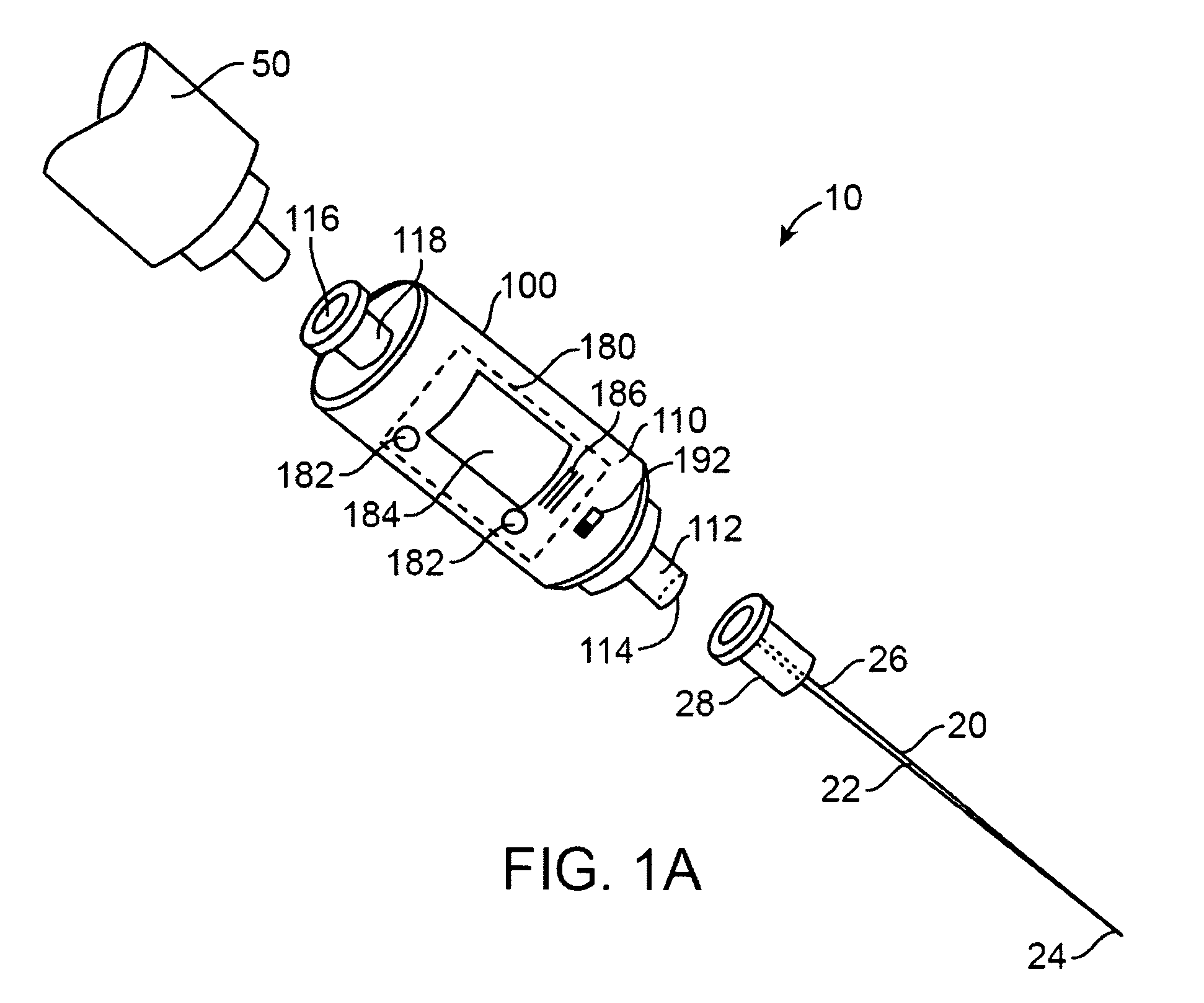Systems, methods, and devices for facilitating access to target anatomical sites or environments
a technology of anatomical sites and systems, applied in the field of systems, methods and devices for facilitating access to target anatomical sites, can solve the problems of severe bleeding, severe bleeding, and possible death, and achieve the effects of avoiding bleeding, avoiding bleeding, and avoiding bleeding
- Summary
- Abstract
- Description
- Claims
- Application Information
AI Technical Summary
Benefits of technology
Problems solved by technology
Method used
Image
Examples
Embodiment Construction
[0051]Different types of objects, for example, needles, probes, catheters, tubes, and tissue ablation devices can be inserted into a human or animal body for various medical purposes or indications. Accurate placement or positioning of such objects within the body is generally required. For instance, during venous catheterization, it is important to place a needle or catheter into a target vein or intravenous site, and avoid arterial or non-vascular placement.
[0052]Devices of the present invention can be configured for detecting and / or utilizing a single physiological parameter value or a plurality of distinct or different types of physiological parameters. Devices of the present invention that are used for detecting physiological parameters are sometimes referred to herein as detection devices.
[0053]Prior approaches fail to provide an active visual indication of whether a probe or needle tip has transitioned into a target anatomical environment as well as an active visual indicatio...
PUM
 Login to View More
Login to View More Abstract
Description
Claims
Application Information
 Login to View More
Login to View More - R&D
- Intellectual Property
- Life Sciences
- Materials
- Tech Scout
- Unparalleled Data Quality
- Higher Quality Content
- 60% Fewer Hallucinations
Browse by: Latest US Patents, China's latest patents, Technical Efficacy Thesaurus, Application Domain, Technology Topic, Popular Technical Reports.
© 2025 PatSnap. All rights reserved.Legal|Privacy policy|Modern Slavery Act Transparency Statement|Sitemap|About US| Contact US: help@patsnap.com



